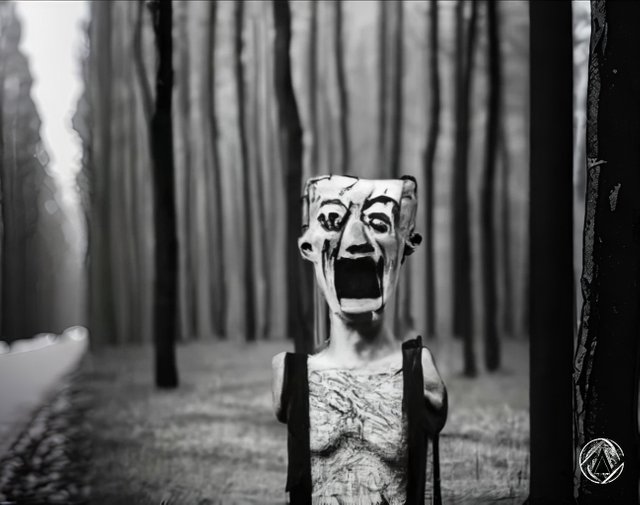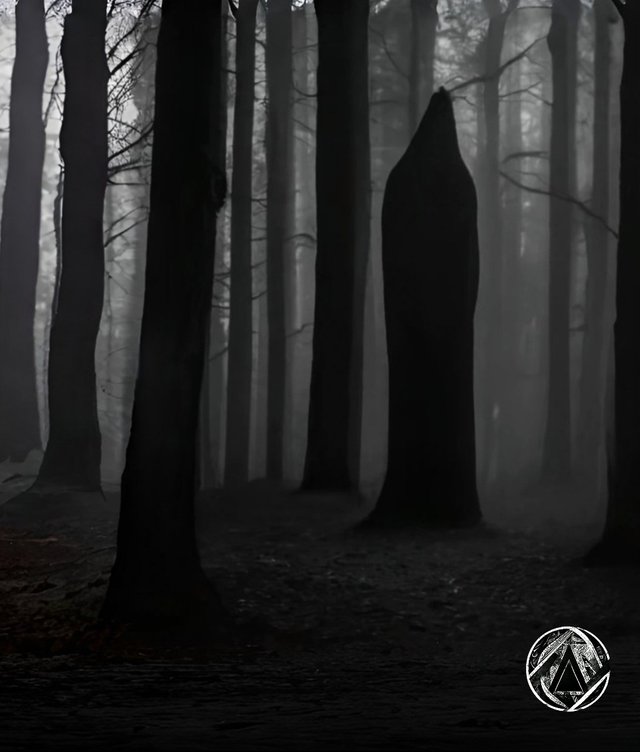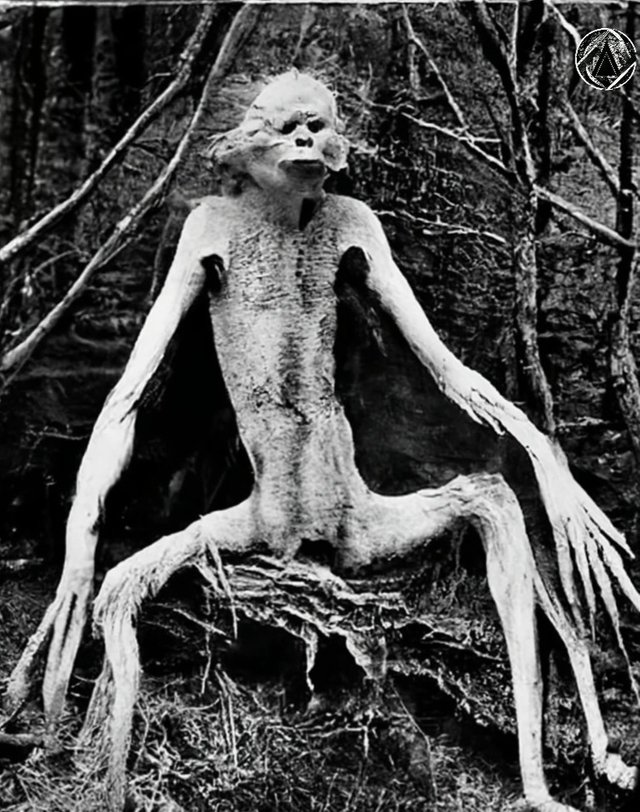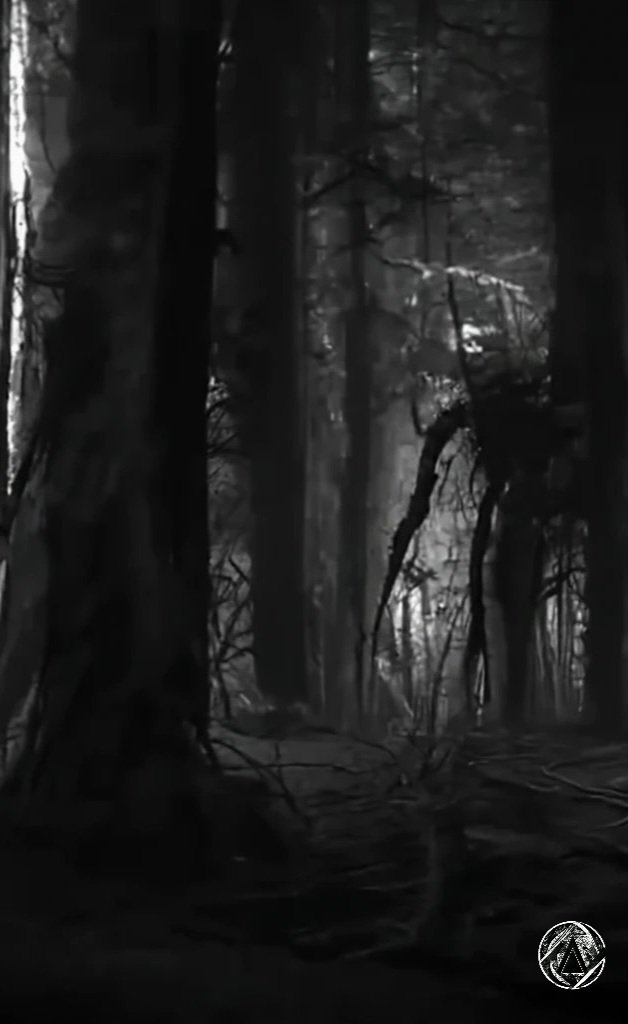Bark Skippers
Noctis Lumen Agency

Anomaly Designation: Arbor Entity Classification (AEC) - Case File 001
Anomaly Name: Arboreal Mimics: Phytomorphic Oganisms (AMPO)

Description: Arboreal Mimics, colloquially referred to as "bark skippers," are anomalous instances of arboreal entities exhibiting human-like or anthropomorphic characteristics. These entities are typically manifested in wooded areas or dense forests. They appear to be composed of organic matter consistent with the surrounding tree species but have developed humanoid shapes, often resembling distorted human figures or other recognizable forms.
Behavior: Bark skippers demonstrate predatory behavior, luring unsuspecting individuals into their vicinity through various means, including mimicking human voices or distress calls. Once a victim is within close proximity, the bark skippers ensnare them using appendages formed from branches or root systems, incapacitating them.
Victim Utilization: Captured individuals are utilized by the bark skippers as a form of sustenance and reproductive aid. Victims are integrated into the surrounding soil or vegetation, serving as live fertilizer to nourish the arboreal entity and facilitate its growth and reproduction. This process involves a gradual assimilation of the victim's biological matter into the root system of the bark skipper.
Containment Protocol: Due to the elusive nature of arboreal mimics and their ability to blend seamlessly into forest environments, containment efforts primarily focus on monitoring and restricting access to areas known to be inhabited by these entities. Specialized surveillance equipment capable of detecting anomalous fluctuations in local flora is deployed to identify potential bark skipper habitats.
Research Notes: Further study is required to understand the origin and underlying mechanisms behind the anomalous properties exhibited by arboreal mimics. Research efforts should prioritize the development of effective countermeasures for containment and neutralization while minimizing collateral damage to the surrounding ecosystem.

Encounter Log:

Date: March 10, 1922
Location: Blackwood Forest, Oregon
Team Members:
• Praesidium (Lead Investigator)
• Custos
• Vigilans
• Explorator
Objective: Investigate reports of Bark Skipper activity in the designated area.
March 10, 1922
Under the canopy of ancient redwoods, the investigative team, led by Praesidium, delved into the depths of Blackwood Forest. A sense of foreboding hung heavy in the air as they advanced cautiously, their senses alert to any sign of anomalous activity.
As the moon cast its silvery glow upon the forest floor, the team stumbled upon a clearing where a lone figure stood amidst the shadows. It was a Bark Skipper, its form twisted and gnarled, yet undeniably sentient.
The creature regarded the team with eyes that sparkled with intelligence, a stark contrast to its organic exterior. Praesidium, recognizing the potential danger, signaled for the team to maintain a safe distance while they observed the Bark Skipper's behavior.
To their surprise, the creature did not exhibit the mindless aggression typically associated with anomalous entities. Instead, it communicated through a series of subtle gestures and melodic whispers, its language a mystery to the investigators.
Custos, drawn by curiosity, approached the Bark Skipper, hoping to establish some form of communication. In response, the creature extended a slender tendril, reaching out in a gesture of tentative camaraderie.
Before Praesidium could intervene, Custos found himself ensnared by the Bark Skipper's sinewy appendages. Vigilans and Explorator sprang into action, deploying containment measures to neutralize the threat and free Custos from the creature's grasp.
Despite the ordeal, Custos emerged unscathed, though shaken by the encounter. As the team retreated from the clearing, Praesidium couldn't shake the feeling that they had only scratched the surface of a much deeper mystery lurking within the depths of Blackwood Forest.
Conclusion:
The encounter with the Bark Skipper in Blackwood Forest revealed a level of intelligence and complexity previously unseen in anomalous entities. Further investigation is warranted to uncover the creature's motives and develop effective containment strategies to mitigate the potential threat it poses.
Containment Log:
Date: March 12, 1922
Location: Blackwood Forest, Oregon
Objective: Containment and study of the captured Bark Skipper entity.
March 12, 1922
Following the encounter with the Bark Skipper in Blackwood Forest, the investigative team, led by Praesidium, initiated containment procedures to secure the captured entity for further study.
The Bark Skipper, now designated as Specimen BSA-001, displayed a high level of intelligence and posed a significant containment challenge. To safely contain the entity, the team employed a multi-faceted approach combining specialized equipment and strategic planning.
Containment Procedure:
• Deployment of Containment Team: Praesidium led a containment team consisting of Custos, Vigilans, Explorator, and additional support personnel equipped with specialized containment gear.
• Secure Restraint Protocol: The team utilized reinforced nets and containment cables to immobilize the Bark Skipper and prevent its escape. Vigilans and Explorator strategically positioned themselves to flank the entity while Custos and additional team members coordinated the restraint process.
• Sedation Application: To minimize the risk of resistance, Custos administered a sedative agent specifically formulated to induce temporary paralysis in the Bark Skipper. The sedative was delivered via tranquilizer dart, targeting the entity's central nervous system.
• Containment Chamber Preparation: Once subdued, Specimen BSA-001 was carefully transported to a specially constructed containment chamber equipped with reinforced organic material resistant to the entity's anomalous abilities. The chamber featured monitoring equipment to track the entity's vital signs and behavior patterns.
• Secure Containment: Specimen BSA-001 was securely confined within the containment chamber, which was sealed with multiple layers of reinforced material to prevent escape. Additional security measures, including surveillance cameras and motion sensors, were installed to monitor the entity's activity and ensure containment integrity.
Research and Study:
With Specimen BSA-001 safely contained, Praesidium, Custos, Vigilans, and Explorator, along with a team of research specialists, commenced detailed study and analysis of the Bark Skipper's biology, behavior, and anomalous properties. Observation sessions, experimentation, and data collection efforts were initiated to further understand the entity's capabilities and potential implications for containment and neutralization.
Conclusion:

The successful containment of Specimen BSA-001 represents a significant achievement in the study of anomalous entities. Continued research and collaboration with research teams are imperative to unraveling the mysteries surrounding the Bark Skippers and developing effective containment strategies to mitigate the potential threat they pose.